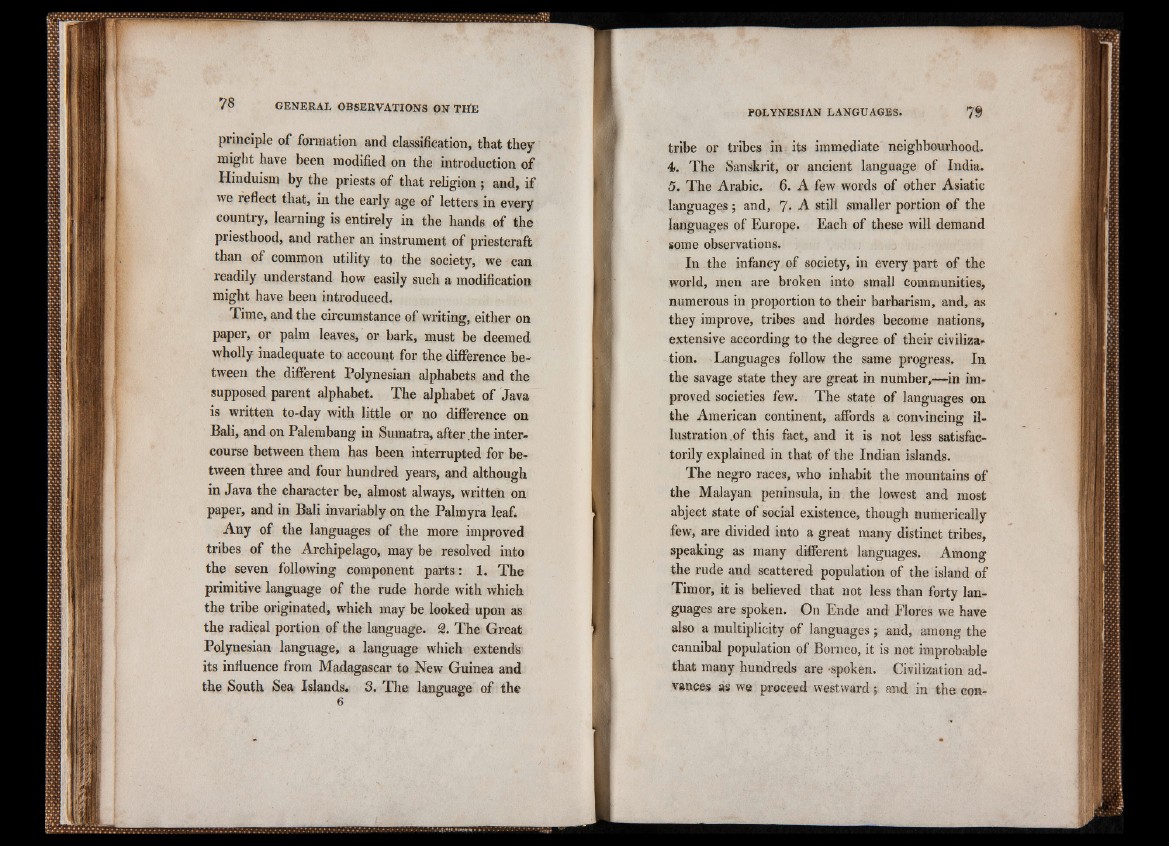
principle of formation and classification, that they
might have been modified on the introduction of
Hinduism by the priests of that religion ; and, if
we reflect that, in the eai’ly age of letters in every
country, learning is entirely in the hands of the
priesthood, and rather an instrument of priestcraft
than of common utility to the society, we can
readily understand how easily such a modification
might have been introduced.
Time, and the circumstance of writing, either on
paper, or palm leaves, or bark, must be deemed
wholly inadequate to account for the difference between
the different Polynesian alphabets and the
supposed parent alphahet. The alphabet of Java
is written to-day with little or no difference on
Bali, and on Palembang in Sumatra, after .the intercourse
between them has been interrupted for between
three and four hundred years, and although
in Java the character be, almost always, written on
paper, and in Bali invariably on the Palmyra leaf.
Any of the languages of the more improved
tribes of the Archipelago, may be resolved into
the seven following component parts : 1 . The
primitive language of the rude horde with which
the tribe originated, which may be looked upon as
the radical portion of the language. §. The Great
Polynesian language, a language which extends
its influence from Madagascar to New Guinea and
the South Sea Islands. 3. The language of the 6
tribe or tribes in its immediate neighbourhood.
4 . The Sanskrit, or ancient language of India.
5. The Arabic. 6. A few words of other Asiatic
languages; and, rJ. A still smaller portion of the
languages of Europe. Each of these will demand
some observations.
In . the infancy of society, in every part of the
world, men are broken into small communities,
numerous in proportion to their barbarism, and, as
they improve, tribes and hordes become nations,
extensive according to the degree of their civilization.
Languages follow the same progress. In
the savage state they are great in number,—in improved
societies few. The state of languages on
the American continent, affords a convincing illustration,
of this fact, and it is not less satisfactorily
explained in that of the Indian islands.
The negro races, who inhabit the mountains of
the Malayan peninsula, in the lowest and most
abject state of social existence, though numerically
few, are divided into a great many distinct tribes,
speaking as many different languages. Among
the rude and scattered population of the island of
Timor, it is believed that not less than forty languages
are spoken. On Ende and Flores we have
also a multiplicity of languages ; and, among the
cannibal population of Borneo, it is not improbable
that many hundreds are spoken. Civilization advances
as we proceed westward; and in the con